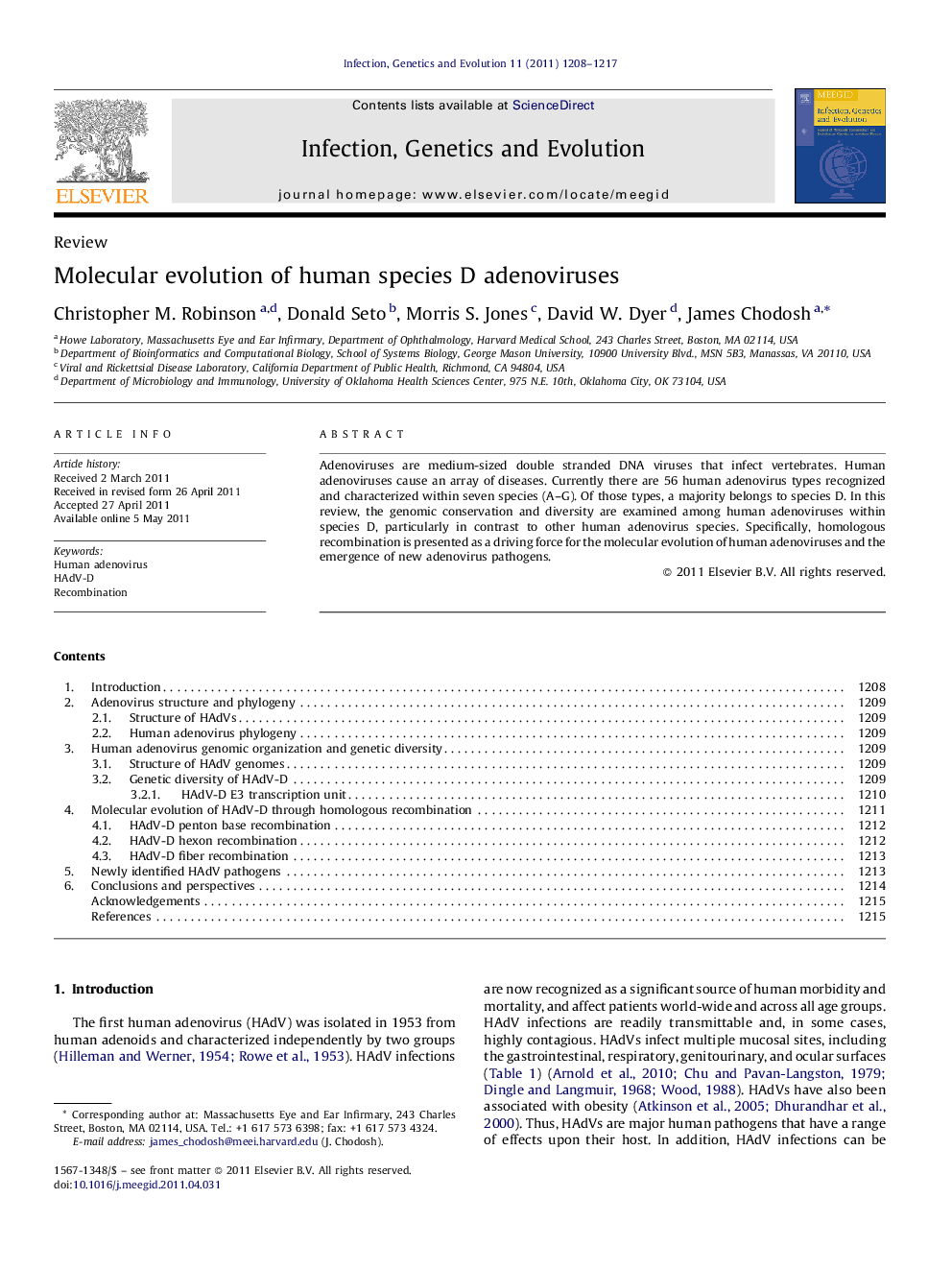| Article ID | Journal | Published Year | Pages | File Type |
|---|---|---|---|---|
| 5911746 | Infection, Genetics and Evolution | 2011 | 10 Pages |
Adenoviruses are medium-sized double stranded DNA viruses that infect vertebrates. Human adenoviruses cause an array of diseases. Currently there are 56 human adenovirus types recognized and characterized within seven species (A-G). Of those types, a majority belongs to species D. In this review, the genomic conservation and diversity are examined among human adenoviruses within species D, particularly in contrast to other human adenovirus species. Specifically, homologous recombination is presented as a driving force for the molecular evolution of human adenoviruses and the emergence of new adenovirus pathogens.
⺠Human adenovirus species D represents the largest species of human adenoviruses. ⺠We examine the genetic diversity within this ubiquitous group of human adenoviruses. ⺠Homologous recombination is the primary mechanism for viral evolution within this human adenovirus species.
